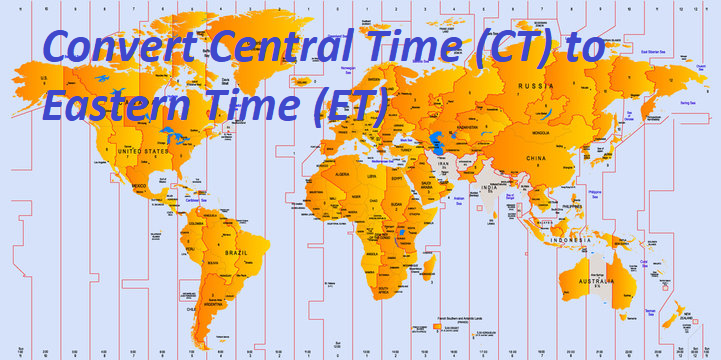Understanding and navigating time zones are vitally important, from virtual meetings and scheduling flights across regions to event coordination across locations and beyond. With this comprehensive guide we aim to unlock all the hidden complexities surrounding Central Time (CT) to Eastern Time (ET), providing clarity for seamless time management.
Understanding Central Time (CT) and Eastern Time (ET)
Before getting too deep into the conversion process, let’s understand some basics regarding Central Time (CT) and Eastern Time (ET), two timezones used within continental United States which each represent one hour difference in timing.
Central Time (CT): This time zone falls six hours behind Coordinated Universal Time (UTC-6), covering much of central and southwestern United States including Chicago, Dallas and Houston.
Eastern Time (ET): Eastern Time is five hours behind Coordinated Universal Time (UTC-5), covering major US cities like New York, Washington D.C. and Atlanta on its eastern seaboard.
The Conversion Process
Converting Time from Central Time to Eastern Time involves adding one hour onto Central Time – this accounts for the one-hour difference between these time zones. Here’s how this works in detail:
Establish the Central Time
First, identify which Central Time zone time zone you would like to convert; for instance if it’s 3:00 PM CT this should serve as your starting point.
Add One Hour
In line with Eastern Time being one hour ahead of Central Time, simply adding an hour onto any time identified will bring it forward one hour. In this instance, adding one hour would put 3:00 PM forward one hour and result in 4:00 PM being identified as being correct.
Check Daylight Saving Time (DST) Impact on Convertibility
Keep Daylight Saving Time in mind as part of your conversion calculations. Both Central Time and Eastern Time observe DST; it usually begins the second Sunday in March and lasts through to November 1. During DST, one hour time difference remains unaltered between them.
Handling Daylight Saving Time
Daylight Saving Time can add another level of complexity when it comes to time zone conversions. Here’s how you should handle it:
When DST Is In Effect
mes Within its DST period, both Central Time and Eastern Time advance one hour forward simultaneously while keeping their standard one-hour difference unchanged. Outside Of Its Limits: Outside its boundaries, time difference does not change by an hour compared with
when DST was observed (it remained as before). As an Example Of Application Of Daylight Saving Time In This Example The timing and date are correct compared with Standard Time in Eastern Australia
Let’s use some examples to demonstrate the conversion process
Standard Time (no DST): 2.00 PM CT (3.00 ET). Daylight Saving Time: 03.00 (DST).
Central Time: 8:30 AM (CT), add one hour: 9:30 AM (ET). Tools Available to Assist You in Convenient Navigation of Websites and Web Space:
Although manual conversions may be easy, using various online tools and world clocks to convert time zones can make things even simpler. Sites and applications offering this feature allow you to input Central Time with DST consideration and receive Eastern Time results instantly.
Conclusion:
Mastering the art of converting Central Time to Eastern Time can be invaluable in our globalized world, be it for professional meetings, travel arrangements or event coordination purposes. Achieve effective communication and organization requires knowledge of time zones – remember that when making changes due to Daylight Saving Time it may require adding one extra hour onto Central Time as required.
As you navigate your way through time, leverage technology tools to streamline the process and help manage it more effectively. Time may always pass us by; how we choose to manage it makes all the difference in a world that keeps moving onwards and upwards.
